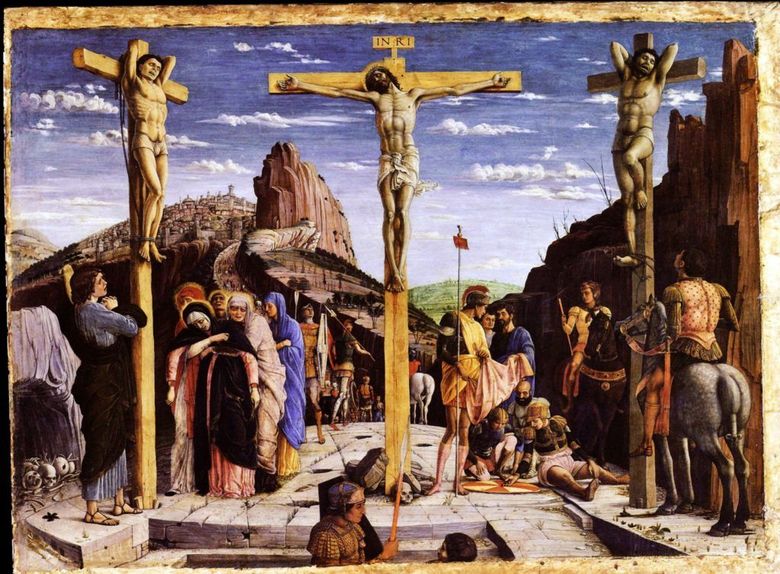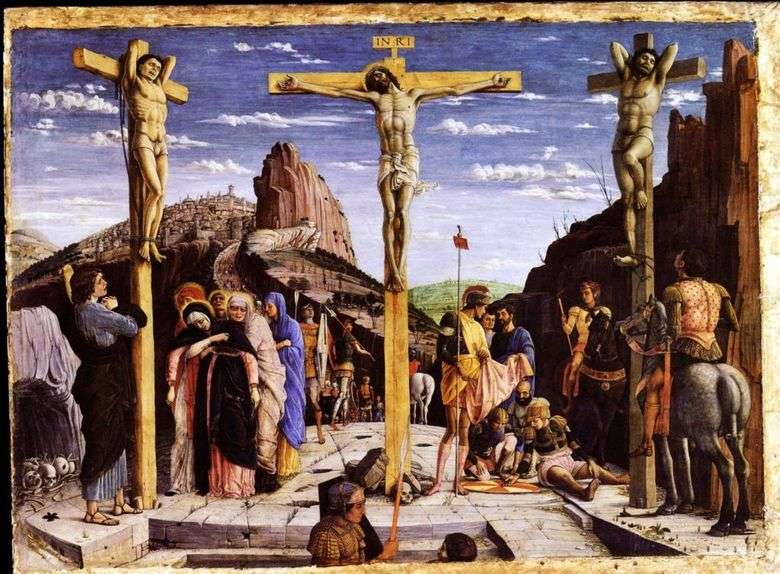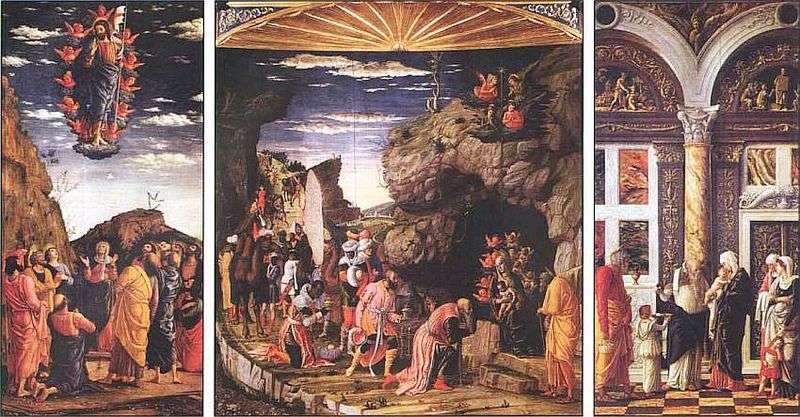
Andrea Mantegna, like many artists of his time, was fond of Antiquity, but he was interested in, first of all, Ancient Rome, rather than Greece. That is why his paintings and murals differed monumentality and sculptural rigor.
A striking example of this is the “Crucifixion”, which was once part of the altar of the Verona church of San Zeno. And the heroes of the picture are the martyrs on the crosses and the people mourning them, and the landscape seems to us to be strict, even stone.
The composition is built on straight lines. Vertical crosses, lines of stone slabs, leading to clear mountains of regular geometric shape, set off groups of people. From this symmetry, they seem to the audience even lonely and despair amidst all the horror of what is happening. Some critics blame Mantegna for some blind adherence to ideal forms, which is why his works are deprived of emotions and feelings, however, in this case, the reception of the painter only added drama when playing the famous plot.
At the end of the 18th century, on the orders of Napoleon, the altar was sawn and taken to France, where it is now located. While the original is kept in the Louvre, in San Zeno it is replaced by a copy of the Mantegna painting.
 Crucifixion – Andrea Mantegna
Crucifixion – Andrea Mantegna Judith and Holofernes by Andrea Mantegna
Judith and Holofernes by Andrea Mantegna Mars and Venus, or Parnas by Andrea Mantegna
Mars and Venus, or Parnas by Andrea Mantegna Saint George by Andrea Mantegna
Saint George by Andrea Mantegna Crucifijo – Andrea Mantegna
Crucifijo – Andrea Mantegna Triptych with the Adoration of the Magi by Andrea Mantegna
Triptych with the Adoration of the Magi by Andrea Mantegna Adoration of the Shepherds by Andrea Mantegna
Adoration of the Shepherds by Andrea Mantegna Prayer of the Chalice by Andrea Mantegna
Prayer of the Chalice by Andrea Mantegna